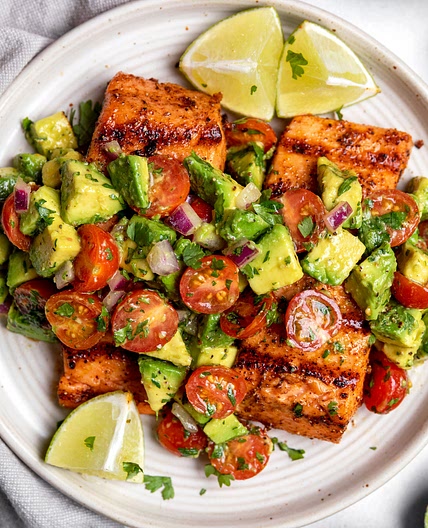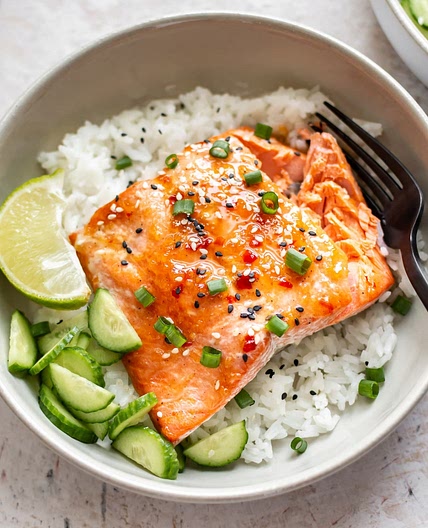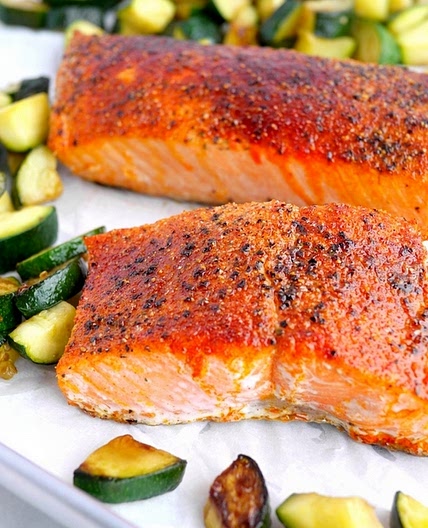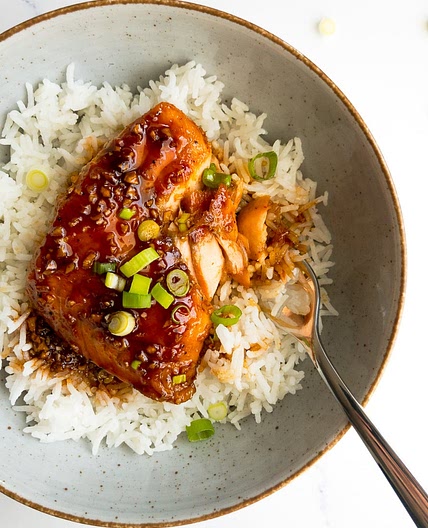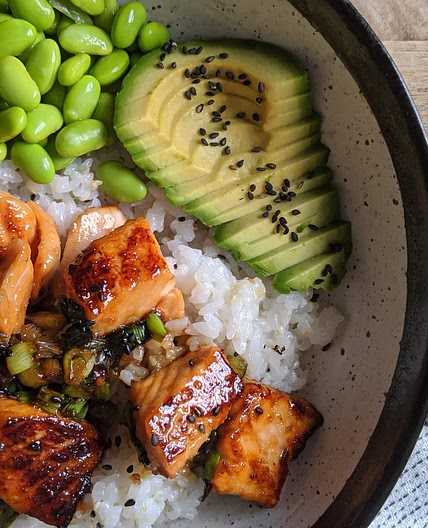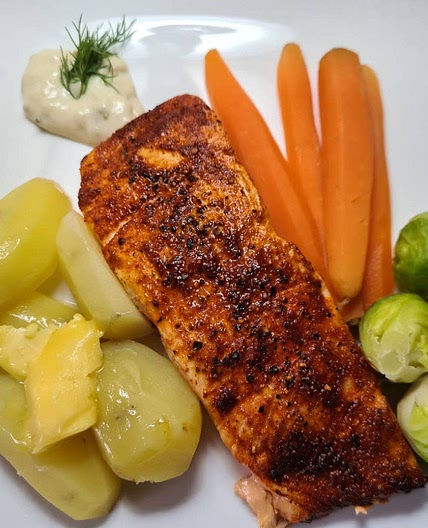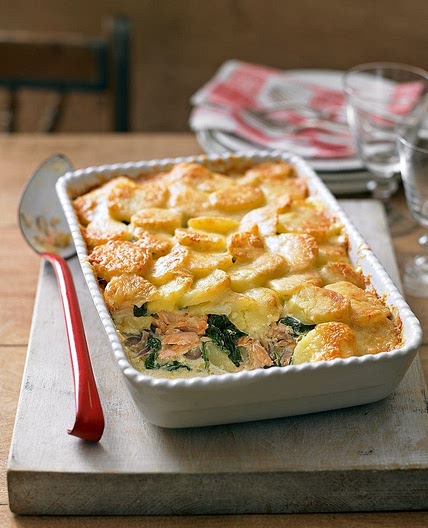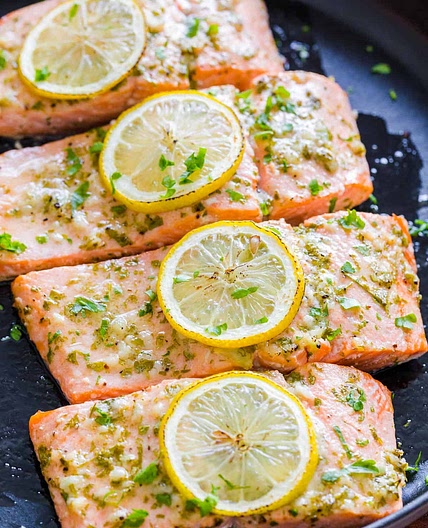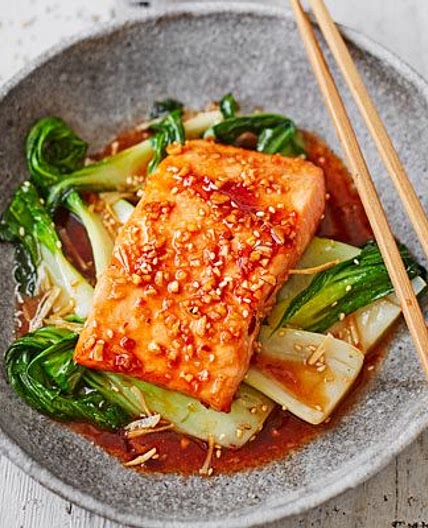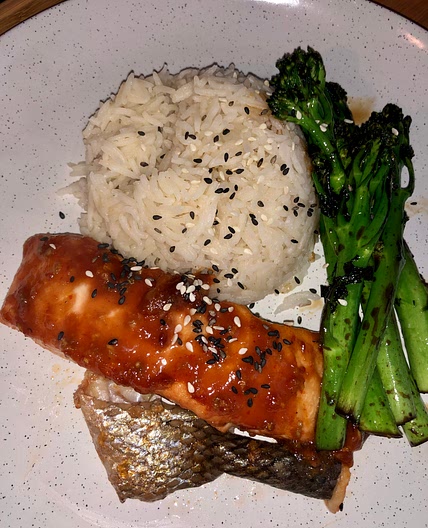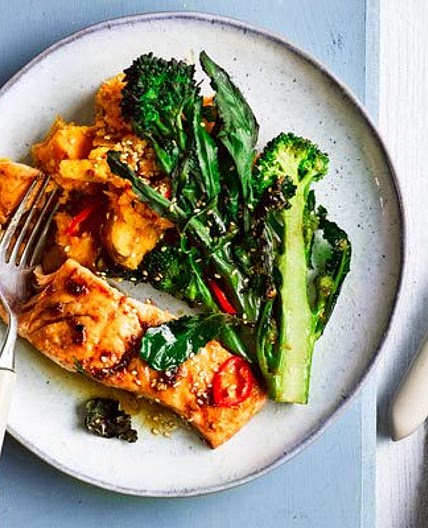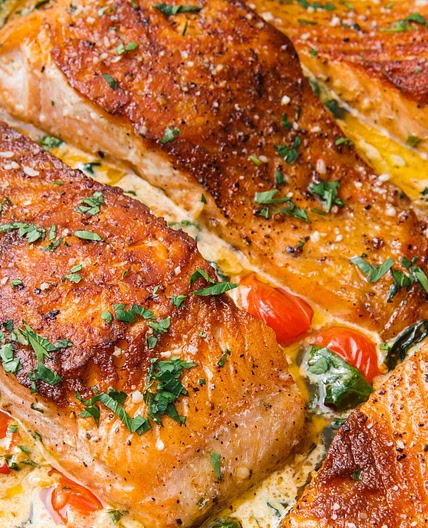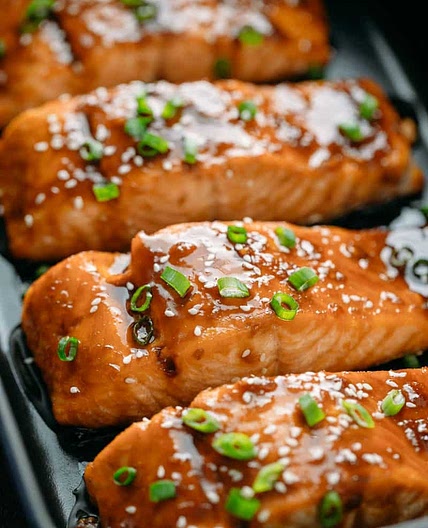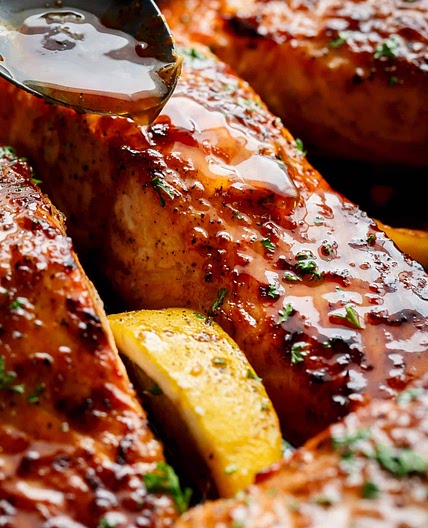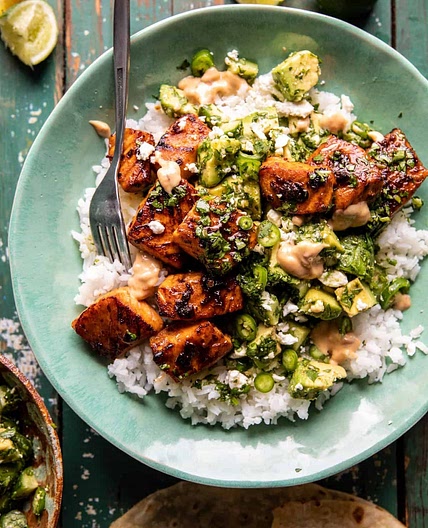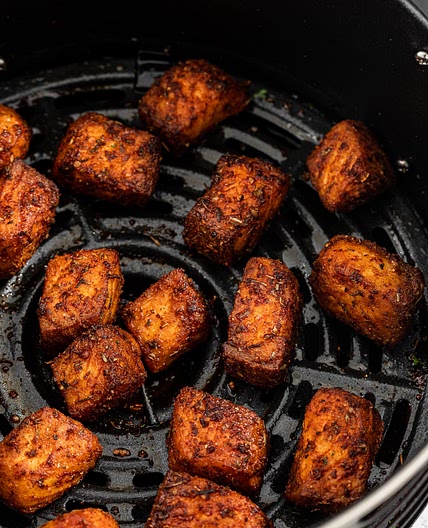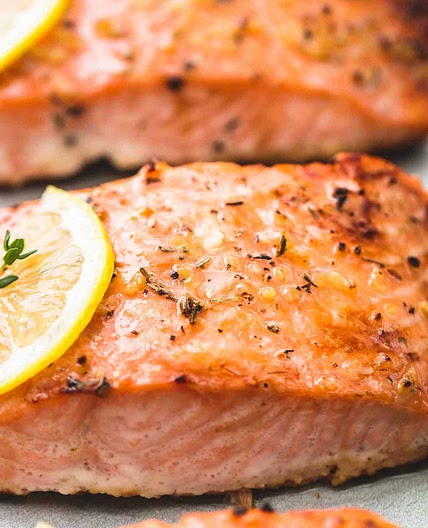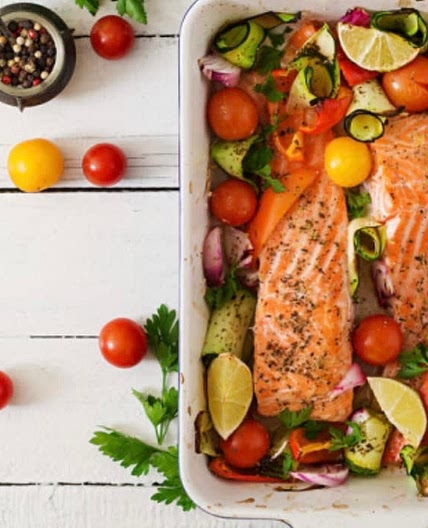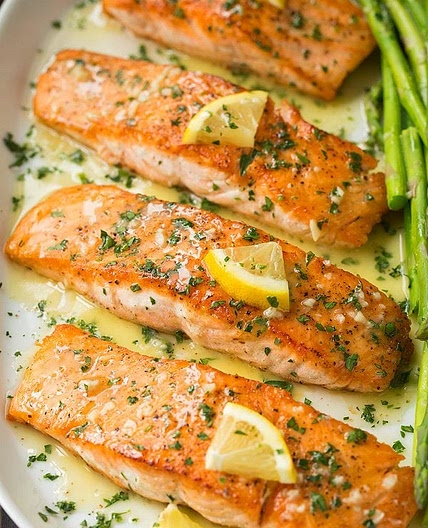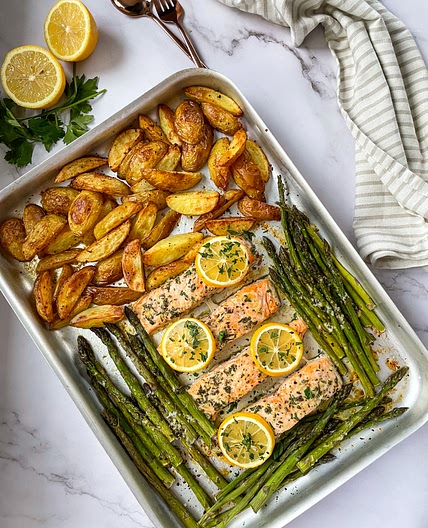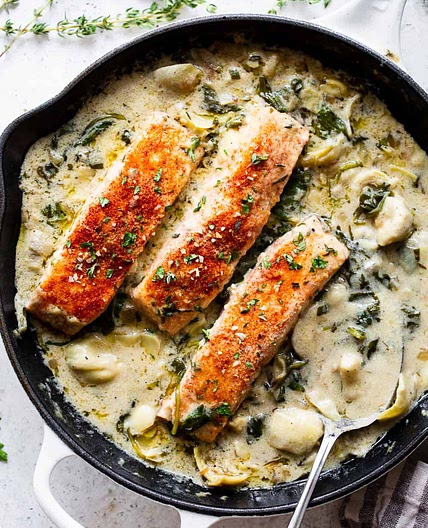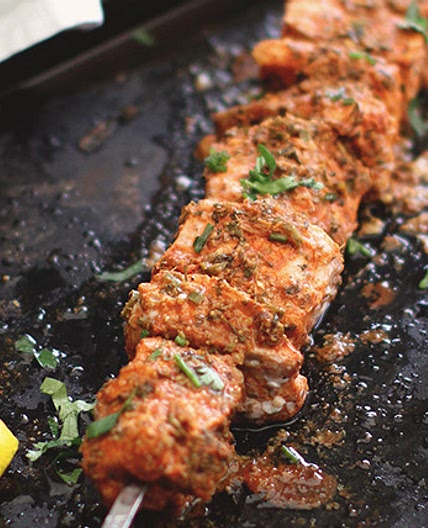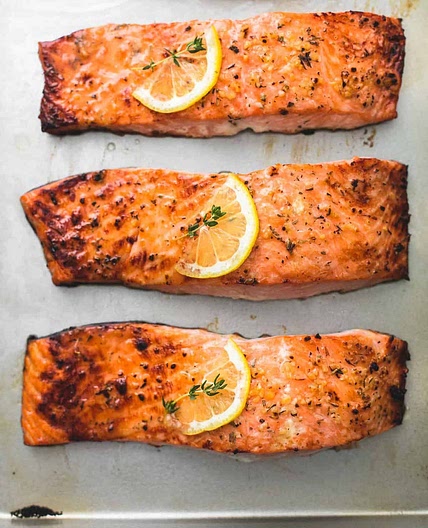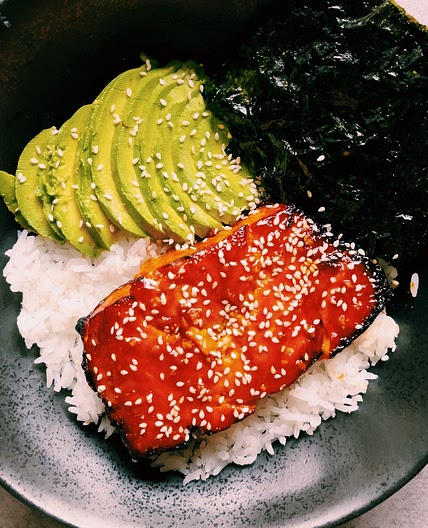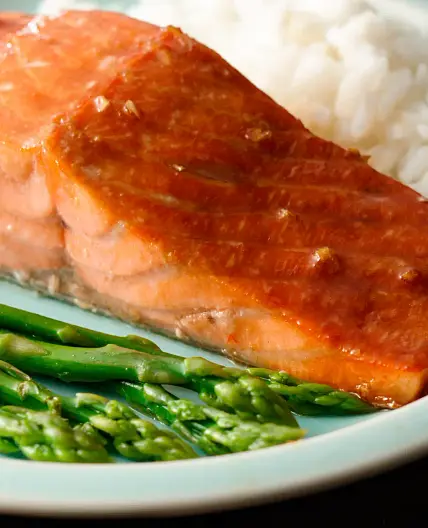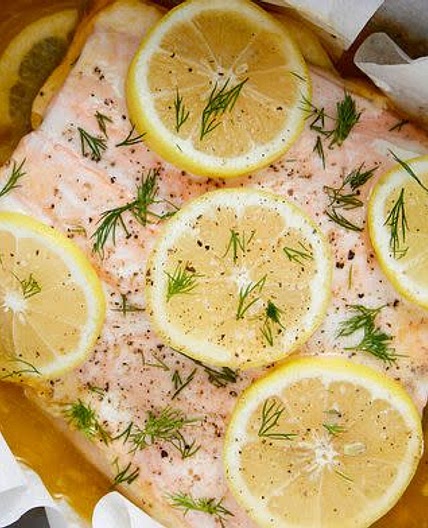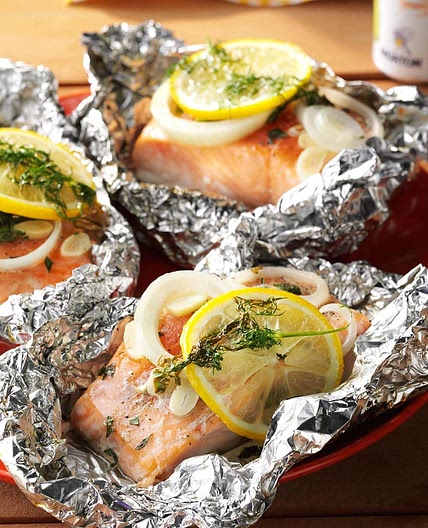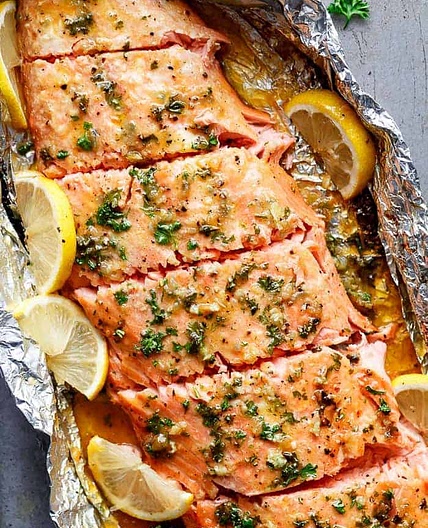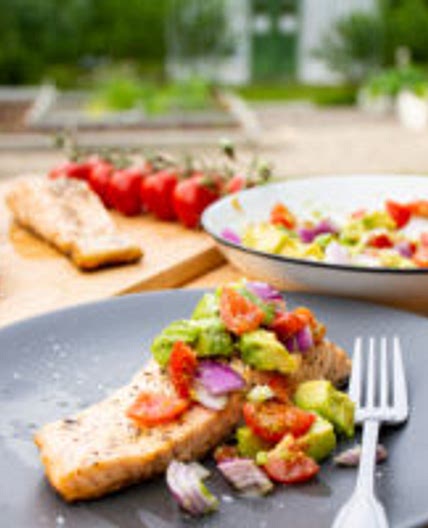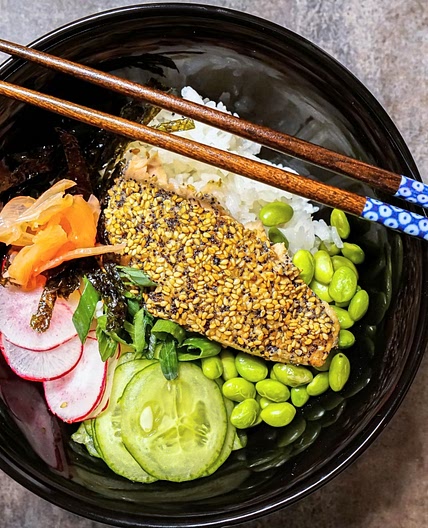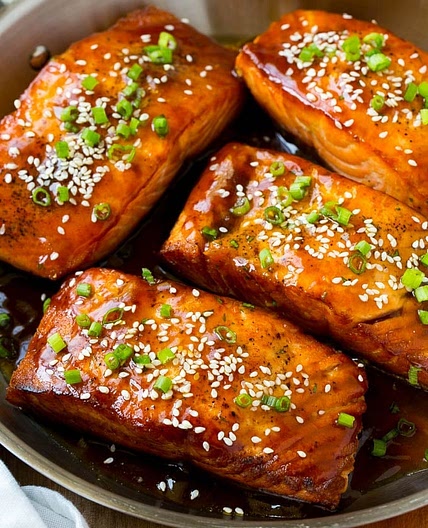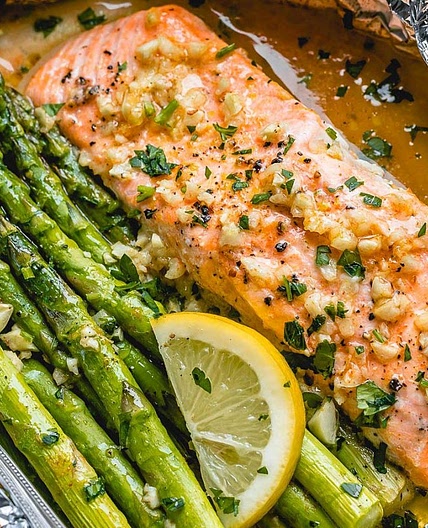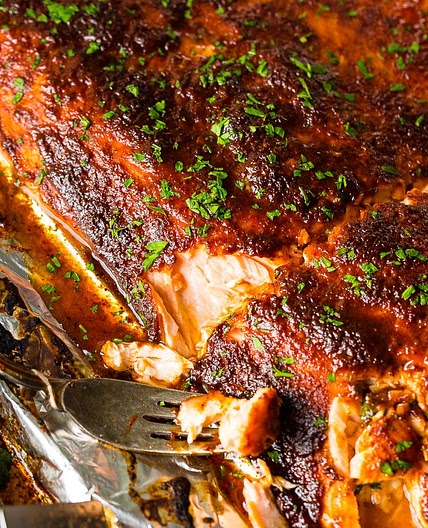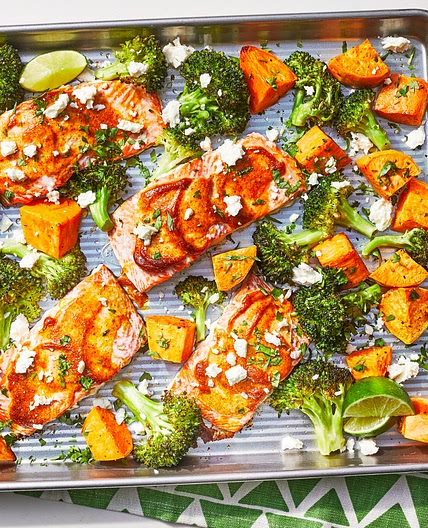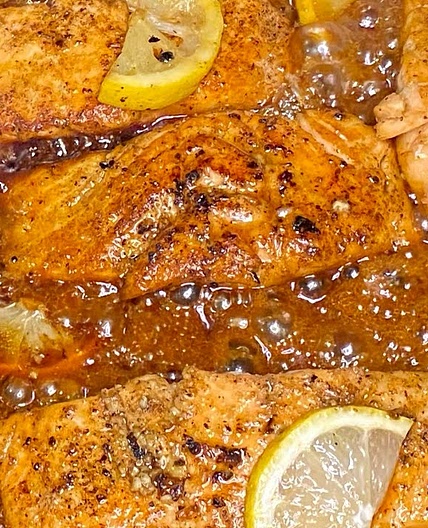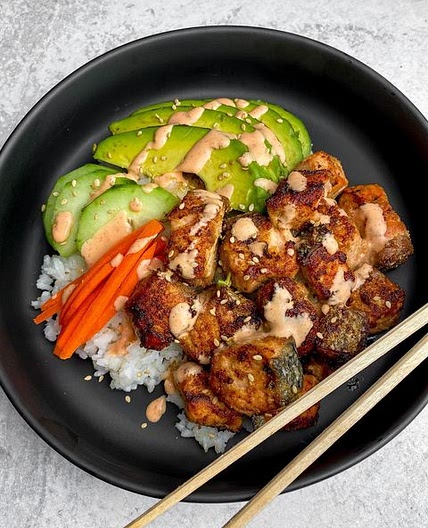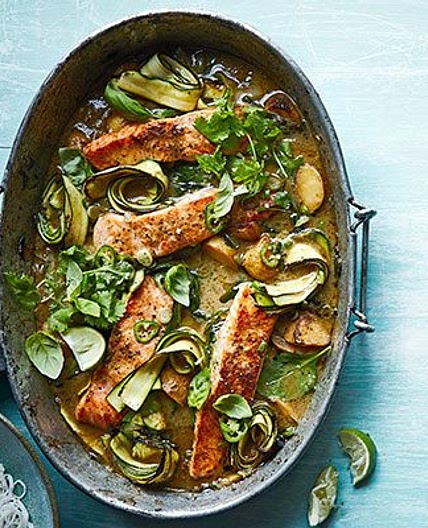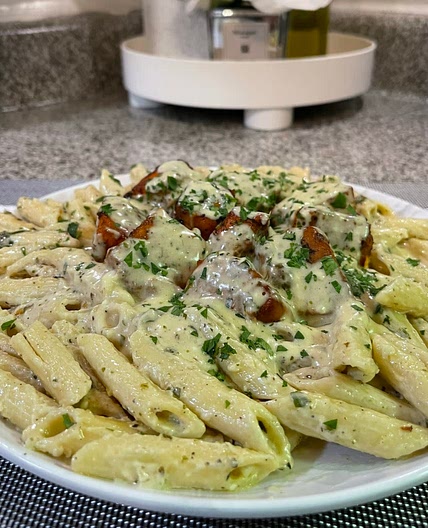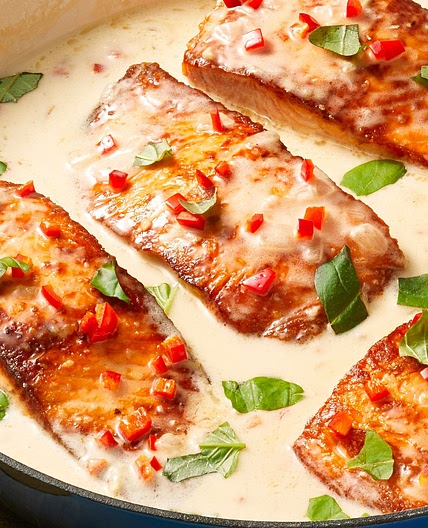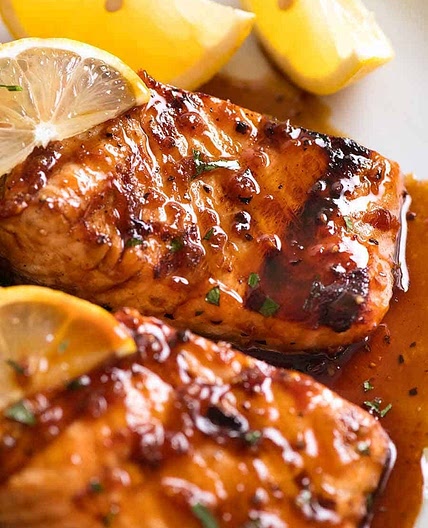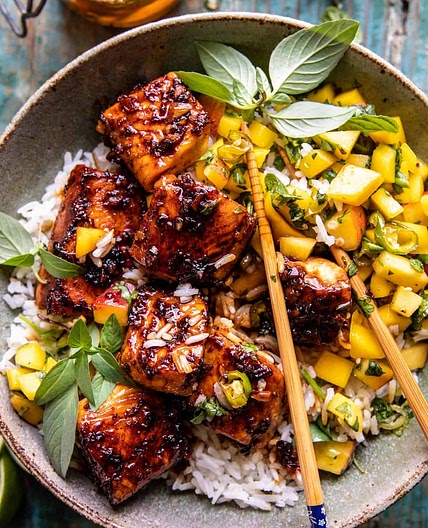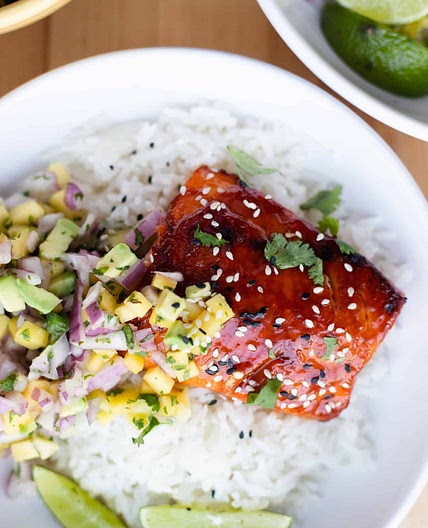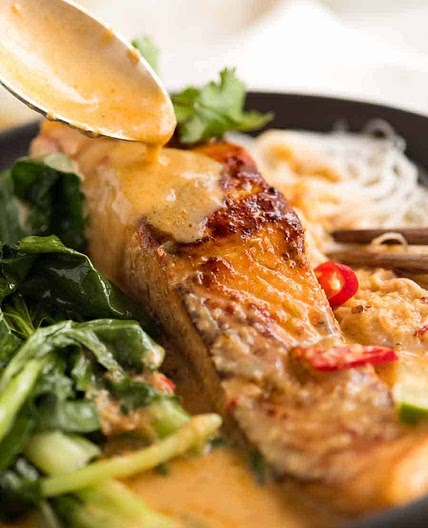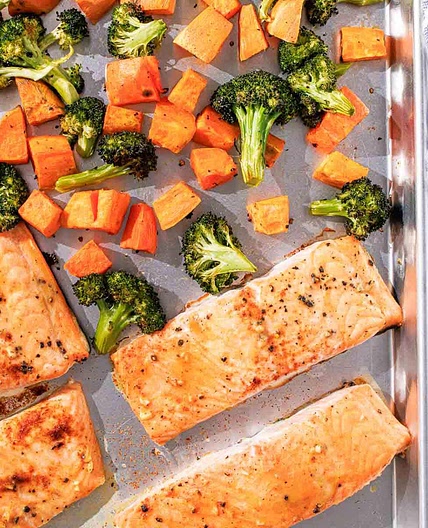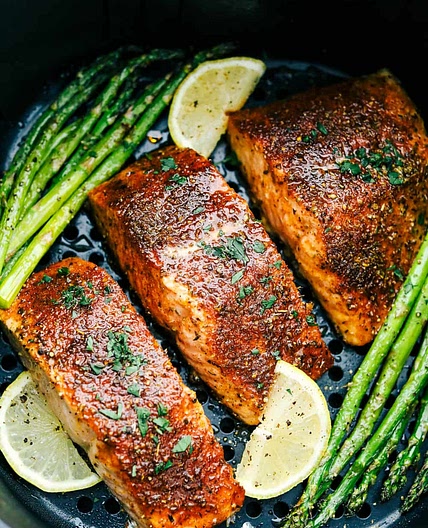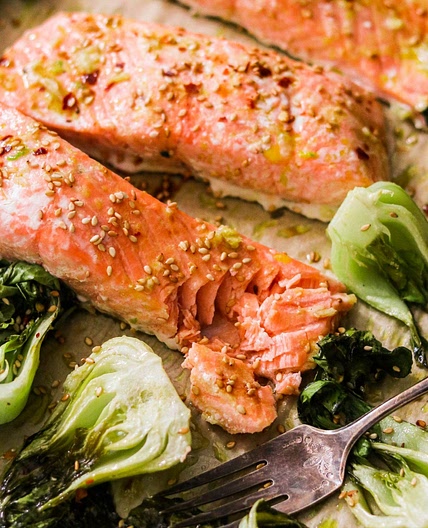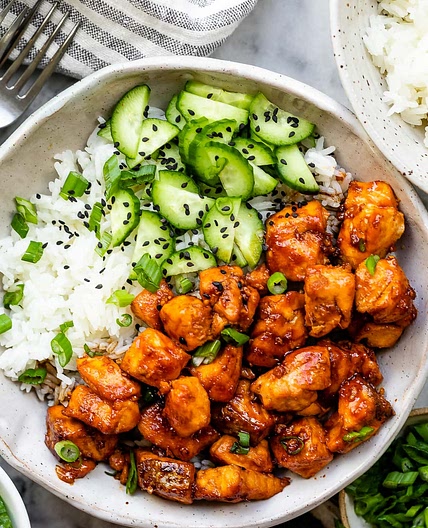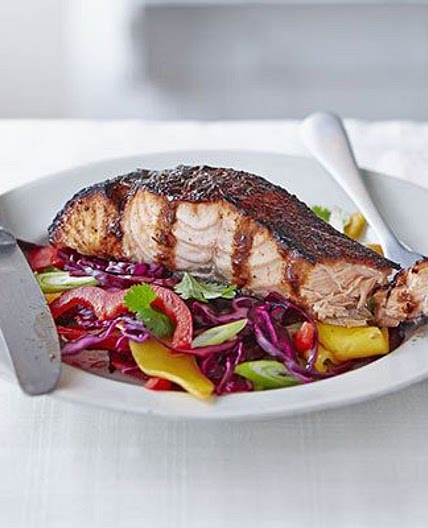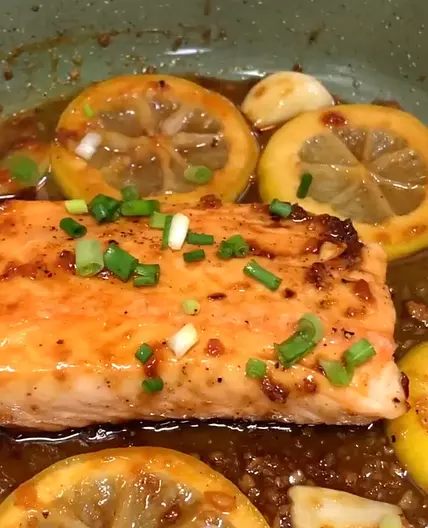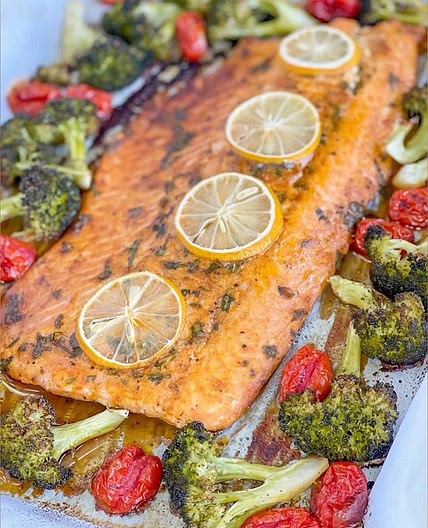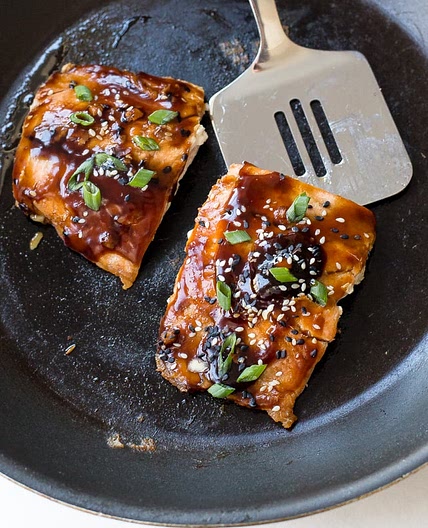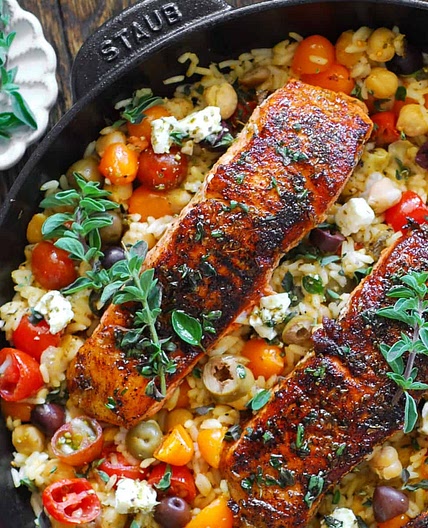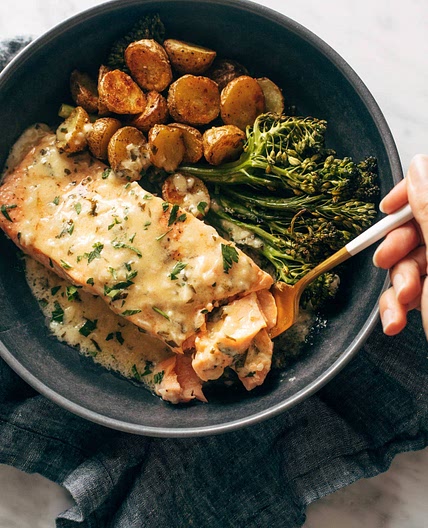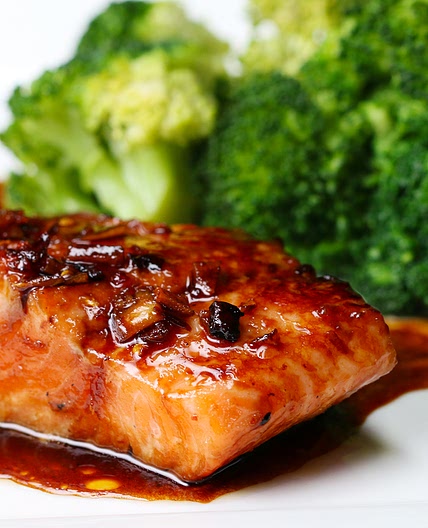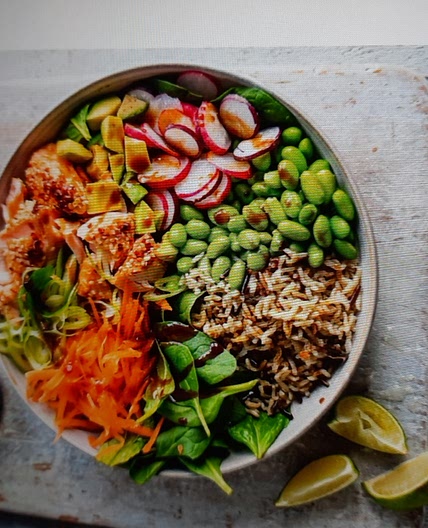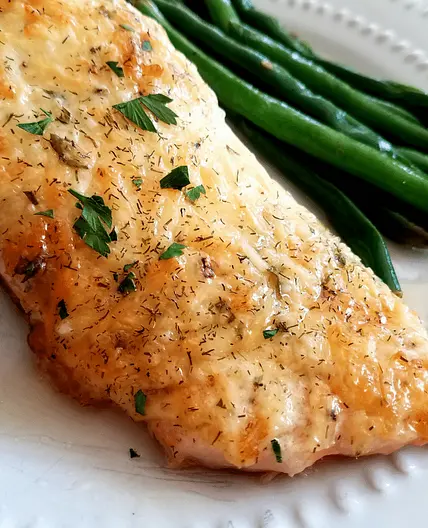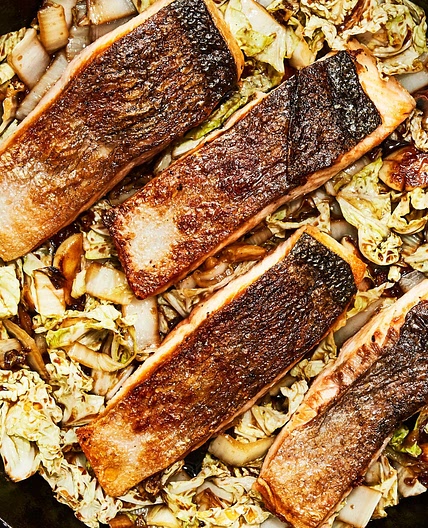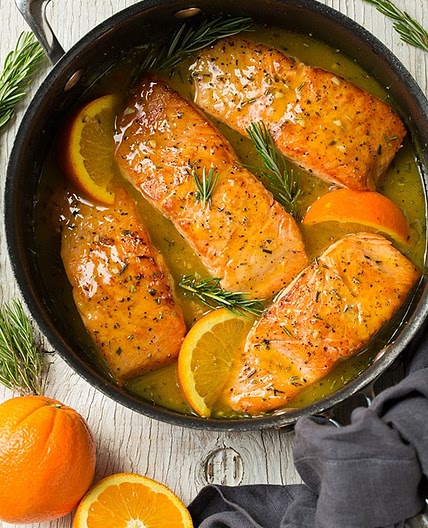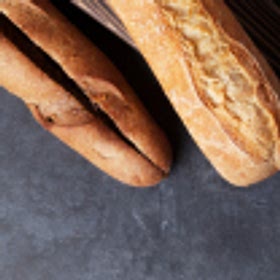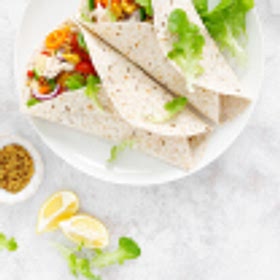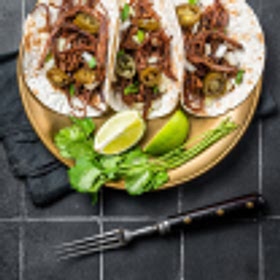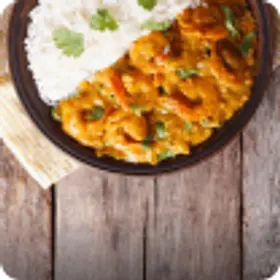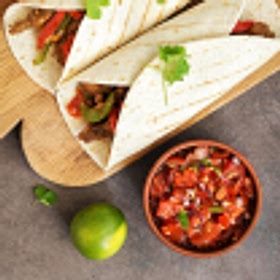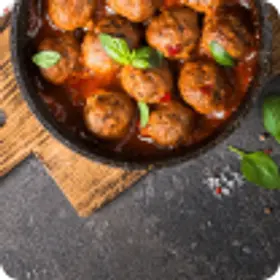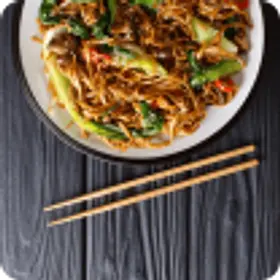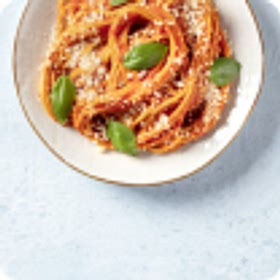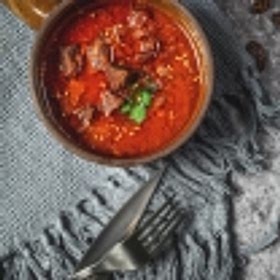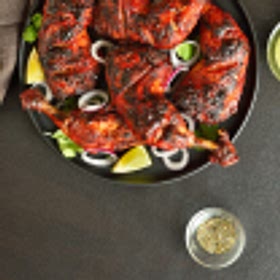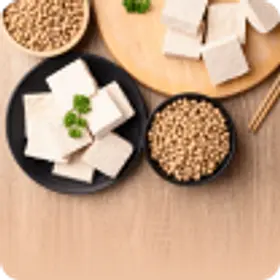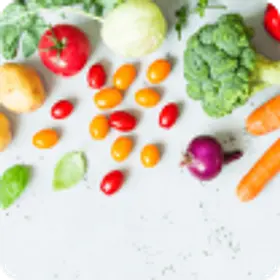Salmon Recipes, Cooking Tips, and Health Benefits – Samsung Food
Salmon is a crowd-pleasing fish that not only delights the taste buds but also offers a range of health benefits. Whether you're planning a casual weeknight dinner or a special occasion feast, salmon is a versatile ingredient that can be prepared in numerous delicious ways. In this guide, we will explore the health benefits of salmon, discuss how to choose the right salmon, dive into various cooking methods, and present a collection of mouthwatering salmon dishes. Plus, we'll share some valuable tips and tricks to help you achieve perfect salmon every time.
- Energy: 0
- Total Fat: 0
- Saturated Fat: 0
- Carbohydrate Total: 0
- Sugars: 0
- Protein: 0
- Sodium: 0
- Fiber: 0
- Trans Fat: 0
- Monounsaturated Fat: 0
- Polyunsaturated Fat: 0
- Cholesterol: 0
- Calcium: 0
- Magnesium: 0
- Potassium: 0
- Iron: 0
- Zinc: 0
- Phosphorus: 0
- Vitamin A: 0
- Vitamin C: 0
- Thiamin B1: 0
- Riboflavin B2: 0
- Niacin B3: 0
- Vitamin B6: 0
- Folic Acid B9: 0
- Vitamin B12: 0
- Vitamin D: 0
- Vitamin E: 0
- Vitamin K: 0
- Tryptophan: 0
- Alpha Carotene: 0
- Beta Carotene: 0
- Omega 3 DHA: 0
- Omega 3 EPA: 0
Salmon is like a superhero fish! Or a superfood, like blueberries. It’s tasty and really good for you. Packed with omega-3s, protein, and vitamins, it helps keep our brain sharp and heart strong. Plus, it can be cooked in loads of ways, like grilling or baking.
Ready to dive in and learn some awesome salmon recipes? Let’s go!
Health Benefits
Salmon is often referred to as a superfood for its amazing nutritional profile. It offers a wide range of health benefits as it is packed with high-quality protein, omega-3 fatty acids, and essential vitamins:
- Omega-3 fatty acids: It is rich in omega-3 fatty acids, particularly EPA (eicosapentaenoic acid) and DHA (docosahexaenoic acid). These essential fatty acids play a crucial role in brain function, heart health, and reducing inflammation in the body. Omega-3s have been linked to a lower risk of heart disease, improved cognitive function, and better mental health.
- Protein: It is an excellent source of high-quality protein, which is essential for building and repairing tissues, supporting the immune system, and maintaining healthy skin, hair, and nails.
- Vitamin D: It is one of the few natural food sources of vitamin D, a nutrient that plays a vital role in calcium absorption, bone health, and immune function. Adequate vitamin D levels are important for overall health and can help protect against various chronic diseases.
- Vitamin B12: It is a rich source of vitamin B12, which is necessary for red blood cell formation, nerve function, and DNA synthesis. Adequate intake of vitamin B12 is essential for maintaining energy levels, supporting brain health, and preventing certain types of anemia.
- Selenium: It is a good source of selenium, an essential mineral with antioxidant properties. Selenium helps protect against oxidative stress, supports thyroid function, and plays a role in immune system regulation.

Choosing the Right Salmon
When it comes to choosing the perfect piece of fish, a few tips might come in handy:
- Wild vs. Farmed: Try to choose wild-caught salmon if you can. It tastes amazing because wild-caught salmon feeds on a natural diet and develops a more complex flavor. It also tends to have a firmer texture and higher levels of omega-3 fatty acids. Look for labels that say “wild-caught” or “sustainably sourced.”
- Freshness: When you’re at the store, look for fish that feels firm and shiny. It shouldn’t be dry or look dry or discolored. If you’re getting a whole fish, its eyes should be clear, not cloudy.
- Time of Year: Different types of salmon are available at different times of the year. Check when the kind you like is around, or ask for something which is seasonally available. This way, you’ll get the freshest and yummiest fish!
Cooking Methods
Salmon can truly be the superstar of the dinner table! We just love eating it, no matter which way it’s prepared. Here are some top picks to try out Here are some of the most popular techniques to choose from when deciding how you’ll cook your salmon recipes:
- Grilling: Grilling gives it a smoky flavor and a slightly charred exterior while maintaining its natural moisture. To prevent sticking, ensure your grill grates are clean and preheated, and brush the fillet with oil before grilling.
- Baking: Baking allows you to infuse the fish with different herbs, spices, and aromatics. The gentle heat of the oven helps to retain the moisture and create a tender, flaky texture. Baking is an excellent option for preparing larger fillets or whole fish. Preheat the oven, place the fish on a lined baking sheet or in a baking dish, and season it according to your preferences. Lemon, garlic, and salt are always winners! Bake until it is cooked through and flakes easily with a fork.
- Pan-frying: Pan-frying is a quick and easy cooking method that produces a crispy outside and a moist, flavorful middle. This method works particularly well for smaller portions or salmon steaks. The high heat and relatively short cooking time create a delicious golden crust. Heat a skillet or frying pan over medium-high heat, add some oil or butter, and carefully place the fish in the pan. Cook for a few minutes on each side until the salmon is cooked through.

The Best Salmon Recipes
This fish is so versatile that you can go as creative as you like without risking losing any deliciousness. Here are some of our favorite salmon recipes to whip up.
Classic Salmon Recipes – Main Dishes
- Grilled Salmon with Herbs: Infuse grilled salmon with aromatic herbs like dill, thyme, or rosemary. The combination of smoky charred flavors and fresh herbs creates a great experience for the taste buds.
- Salmon Stir-Fry: Cut the fish into bite-sized pieces and stir-fry it with an assortment of colorful vegetables such as bell peppers, broccoli, snow peas, and carrots. Add a flavorful sauce made with soy sauce, ginger, garlic, and honey for a quick and healthy meal packed with vibrant flavors.
- Salmon Teriyaki: Marinate the fillets in a homemade teriyaki sauce and then pan-sear, bake, or grill them. The sweet and savory glaze pairs perfectly with the rich flavor of the salmon. Serve with steamed rice and steamed vegetables for a satisfying Asian-inspired dish.
- Lemon Pepper Salmon: Season your fillets generously with lemon zest, freshly cracked black pepper, and a touch of sea salt. Grill or bake until the fish is cooked through and serve with a side of roasted asparagus.
Other salmon recipes
- Salmon Cakes: These savory patties combine cooked salmon, breadcrumbs, herbs, and spices. Whether served as an appetizer or a main course, these are a delicious and budget-friendly way to enjoy salmon. Serve them with a tangy yogurt or dill sauce for added flavor.
- Salmon Caesar Salad: Grill or bake salmon fillets, slice them into strips, and serve them on top of a classic Caesar salad with crisp romaine lettuce, Parmesan cheese, croutons, and a tangy Caesar dressing.
- Salmon Burgers: Swap out traditional beef patties for flavorful salmon burgers. Load them up with your favorite toppings and serve them on a toasted bun for a satisfying and nutritious meal.
- Salmon Tacos: Flake cook salmon and serve it in warm tortillas with shredded lettuce, diced tomatoes, avocado slices, and a drizzle of creamy chipotle sauce. Top with fresh cilantro and a squeeze of lime juice.
- Smoked Salmon and Cream Cheese Bagels: Spread a toasted bagel with cream cheese, and top it with thinly sliced smoked salmon, red onion slices, capers, and fresh dill. Perfect for a satisfying breakfast or brunch.
Tips and Tricks for Perfect Salmon Recipes
Becoming a salmon-cooking pro is easier than you think! Elevate your fish chef game with these tips:
- Flavor boost. Kickstart the magic by generously seasoning your fillets with salt and pepper. Feel free to experiment with other spices and seasonings that match your preferences.
- Perfect doneness. Mastering salmon’s ideal texture is key. The sweet spot is when it’s a touch pink and moist at the center. Avoid overcooking if you want the salmon to be juicy and not dried out. Keep a close eye and aim for a flaky texture.
- Explore flavors. Don’t be afraid to experiment with different herbs, spices, and marinades to add depth and variety to your salmon recipes. Consider options like lemon zest, garlic, soy sauce, honey, or balsamic glaze.
- Quality reigns. The secret to a memorable dish is fresh, top-notch ingredients. That goes for the fish and the side dishes. Let vibrant veggies, fresh herbs, seasonal produce, and flavorful sauces take center stage.
FAQs
Yes, you can freeze it for up to 3 months. Make sure it has cooled down completely. Then, wrap it tightly in plastic wrap or aluminum foil to prevent freezer burn. Place it in an airtight freezer bag or container and label it with the date. When you’re ready to enjoy the fish, place it in the refrigerator overnight before reheating or using it in your favorite dishes.
Determining when the fish is cooked to perfection is crucial for achieving the best taste and texture. It is cooked when its flesh turns opaque and easily flakes with a fork. The color of the salmon should change from translucent to opaque or pale pink. The internal temperature of the thickest part of the fish should reach 145°F (63°C) for safe consumption. Using a meat thermometer is the most accurate way to check the internal temperature. Insert the thermometer into the thickest part of the salmon without touching the bone or the pan. If the temperature reads 145°F (63°C) or higher, it is ready to be enjoyed!
Raw fish is commonly consumed in dishes like sushi, sashimi, and tartare. However, it’s important to exercise caution and ensure the salmon is of high quality and properly handled to minimize the risk of foodborne illnesses. When choosing for raw consumption, opt for sushi-grade fish that has been properly frozen beforehand to kill potential parasites. If you’re unsure about the quality or safety, it’s safer to cook it before consuming it.
Salmon pairs well with various side dishes such as roasted vegetables, steamed asparagus, couscous, quinoa salad, or a fresh green salad.
Ready to Try Salmon Recipes at Home?
Salmon is a versatile and delicious fish that offers numerous health benefits. Whether you choose to grill, bake, or pan-fry, there are endless possibilities for creating mouthwatering salmon dishes. Try out salmon cakes and burgers or grilled fillets with aromatic herbs. Remember to choose high-quality fish, season generously, and avoid overcooking to achieve perfect results. With the information and tips we shared you’re well-equipped to create memorable meals for any occasion.
